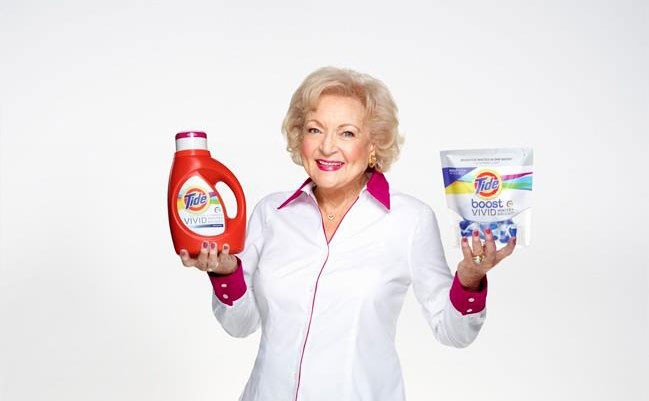How P&G’s Recruiting Team Embraced Marketing and Started Operating Like a Brand
Procter & Gamble (P&G) is well-known as a brand-building company—nurturing strong names like Tide, Head and Shoulders, and Old Spice. They’re branding experts. But a few years ago, they realized they hadn’t applied that same expertise to P&G’s own employer brand, and it was time to start.
This decision was triggered by a major shift in the kind of skills and experience P&G needed from its employees, according to VP of Talent Laura Mattimore. “The fundamental reason this happened is that we have historically been a company that has built from within and—up until a few years ago—recruited almost exclusively off of college campuses,” Laura says.
“Over the last four or five years the business needs have changed, and it’s caused us to need to get into the experienced hire space, which is a very different way of going to market and going to recruiting,” she adds. “So we had to think very differently about what’s our message to experienced hires.”
It turned out that starting a conversation about alluring more experienced talent led to an even bigger shift. “Once we started taking on one piece of the talent supply, we really opened up the whole shop,” Laura says.
Translation: she and her team began to transform recruiting into a brand. In this week’s episode of Talent on Tap, Laura Mattimore talks with Brendan Browne, LinkedIn’s Head of Talent, about how recruiting and marketing began working together, the steps her team took, and advice she has for other HR and talent shops.
How P&G’s marketing and recruiting teams started working together
As developments like the rise of social media have pushed companies to focus more on their employer brand, many of them have found a strong partnership between marketing and recruiting to be essential. In fact, 36% of recruiting teams collaborate with marketing or communications to manage their companies’ branding efforts, while 30% take the lead themselves, according to LinkedIn’s 2017 Global Recruiting Trends report.
As Mattimore began to think about her team’s effort to attract experienced hires, she approached the challenge like marketing would. In an early conversation with P&G’s CMO, she presented research on the team’s top ten markets, understanding its target audiences and what insights and messages the team wanted to communicate.
When talking to the CMO, "the request was can we get people who have mastery in this area to work with us,” she says. After laying out that vision, it was clear to both of them that recruiting needed to do the kind of work to attract candidates that Tide does to attract loyal consumers.
After her team spent more time with the marketing team talking about the scope of the work, “We, together, really concluded that we needed dedicated resources.”
Today, P&G’s talent team now has brand managers, data analysts, a market researcher, a finance leaders and other line leaders.
The steps P&G took to build its employer brand: understanding, clarifying, and messaging
To kick off the brand-building process, Laura and her team first needed to understand what it actually means to run a recruiting team like a brand. She lists three areas:
- Understand the prime prospects (i.e., candidates).
- Be clear about the employee value proposition (EVP).
- Bring the message to life at every touch point with a candidate—whether that’s on the web, on campus, or at a recruiting event.
Laura also had to adopt marketing thinking to build a structure around her team’s brand. Again, she looked at how P&G manages a product like Tide. Just like Tide has a global franchise organization that creates a big-picture brand vision for Tide (such as color and logo), so too would the talent team for its message. And just like Tide has a regional organization that can target its message to local audiences, talent acquisition does the same thing to reach certain candidates.
The lessons for recruiting teams making the jump
Laura offered two key insights into this relatively new world of running talent acquisition like a brand.
First, “Think about your employer brand in the context of your company brand.” In her early conversations with the CMO, he understood the connection between the two because both have an impact on the company’s reputation, she says. “You want to show up as one common company,” she adds.
Second, she urges talent acquisition and HR to not shy away from asking executives for resources. “Take it to the top of the organization and really ask for the help that’s needed, because…They absolutely love this—and it’s a different way to apply their toolkits in a whole new space,” Laura says.
That advice—asking for the help you need—is especially important for smaller talent shops who may not be given the resources of full-time employees. There are lots of folks in other departments who want to use their marketing, engineering or social media skills to take on a new challenge, and that may be the way to begin shaping a marketing plan or, for instance, think about how to glean insights from analytics.
A key point is that there may be less resistance to the request than you think, as Laura says. After all, many of those employees outside HR certainly care about what kind of talent they’re working with, and how their company is viewed in the marketplace.
Talent on Tap is a weekly series where Pat Wadors and Brendan Browne break down some of the hottest topics, biggest challenges, and most enticing opportunities in the world of talent. Talent on Tap will also give you an opportunity to hear from other organizational leaders, subject matter experts, and thought leaders in the space. Stay tuned each week for the latest.
*Image from P&G
To receive blog posts like this one straight in your inbox, subscribe to the blog newsletter.
Topics: Talent On Tap Employer brand
Related articles




